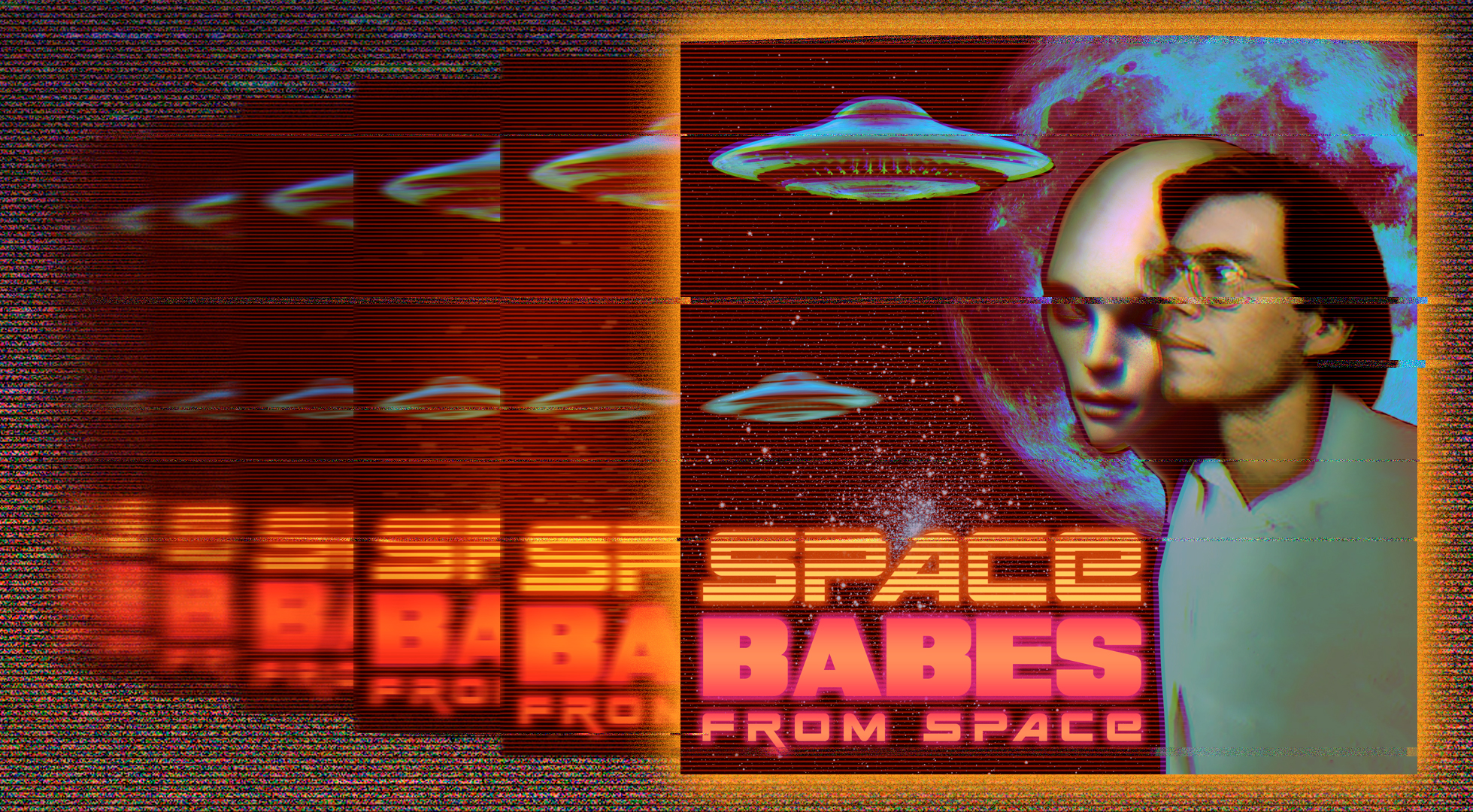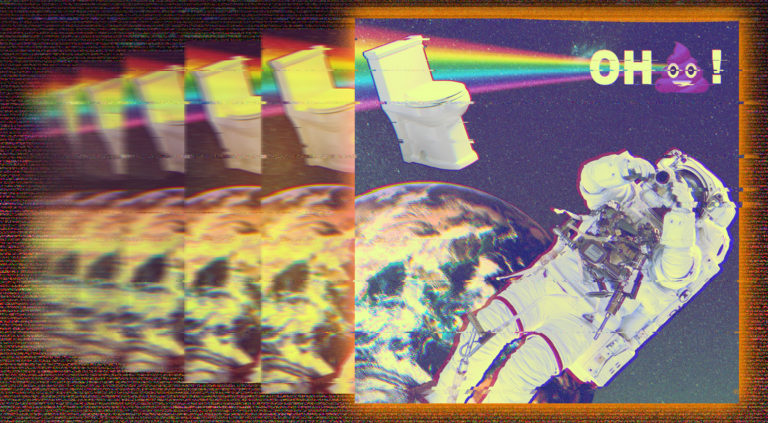Yes, we still poop in space...

Alan Shepard piloted the first human space flight – Freedom 7 – for the US on May 5, 1961 – There was no plan for how he’d pee, since the flight was only supposed to last for around 15 minutes. But the engineers didn’t consider how long Shepard might have to sit on the launchpad first. He ended up having to ask permission to wet his suit.
“Of course with a cotton undergarment, which we had on, it soaked up immediately,” he later said. “I was totally dry by the time we launched.”
Yeah, sure.
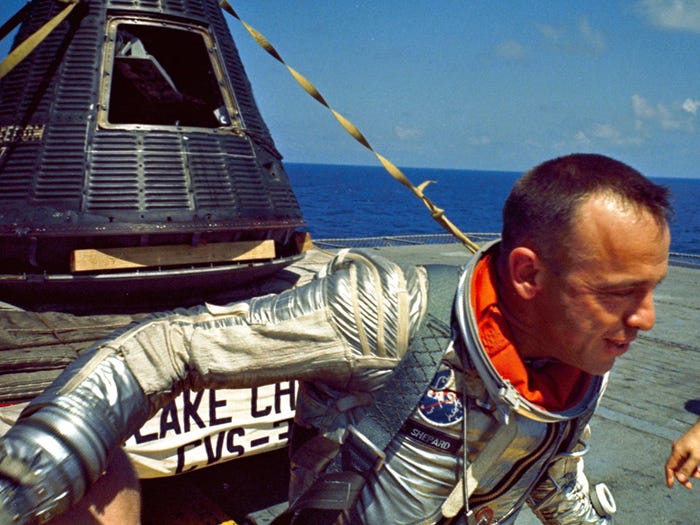
NASA's Early Solutions
Some of the first pee-catchers looked like condoms and came in three sizes. NASA called them roll-on cuffs, and they were not designed to be used by women. It was basically a latex cuff that connected to a plastic clamp, valve, tube and a collection bag. These were known to leak.
In an interview on the Science Channel’s Moon Machines documentary series about early space travel, engineer Donald Rethke, known in space history circles as “Dr. Flush”, describes how these condoms came in specific sizes to accommodate each astronaut’s anatomical size. Astronauts had to accurately state the size of their penis to avoid issues, like leaking, which could damage their suits and be gross. Since no astronaut (or man for that matter) wants to admit that their junk is small, NASA renamed the sizes. Rethke said that the sizes were changed to large, gigantic, and humongous!
LoVe It!
These cuffs were used by John Glenn on his Mercury Atlas 6 mission — the first time NASA sent a human into orbit. The flight lasted 4 hours and 55 minutes.

The Gemini missions of the 1960s were the first time NASA attempted to deal with poop in space. The first devices were just bags taped to astronauts’ butts.
NASAAfter defecation, the crew member was required to seal the bag and knead it in order to mix a liquid bactericide with the contents to provide the desired degree of faeces stabilisation. Because this task was distasteful and required an inordinate amount of time, low residue foods and laxatives were generally used prior to launch.
For the Apollo missions, things didn’t improve much. They continued using the bag method – During the Apollo 10 mission in 1969, astronaut Tom Stafford suddenly said: “Get me a napkin quick. There’s a turd floating through the air.” His crewmate John Young replied in the transcript “I didn’t do it. It ain’t one of mine!”
NASA also developed a “faecal containment system” for Apollo astronauts, since the bags couldn’t be used outside of the spacecraft. The system consisted of “a pair of undershorts with layers of absorbent material”. AKA DIAPER.
The shorts “would serve to contain any excreta,” according to NASA.
The facilities available to the astronauts were so uncomfortable that, to avoid using them, astronauts ate less than half the available food on their flights
Since the bathroom problem was such a big thing, scientists created essentially a bathroom log from the Apollo missions, which included photos of their defecation devices and summaries of how they work, urine and stool samples taken from the astronauts and a brief summary that said:
“Although there were inherent design limitations in the waste management systems used for the manned Apollo missions, performance of the individual systems per se was reasonably satisfactory. However, there were some problems. In addition to being marginal from a hygienic standpoint, use of the collection devices required many steps and the expenditure of a considerable amount of time. The problem of odor was continually present because of the lack of a positive means of eliminating defecation odors.
The Apollo waste management system’s design and operations pointed to the need for several improvements in future missions. These were the following:
1. Future systems should not require intimate contact.
2. The time required for system use should be significantly reduced.
3. The waste management system should provide some technique of automatically removing feces from the buttocks area.

As women began taking part in space travel, NASA created the Disposable Absorption Containment Trunk, which was kind of like bike shorts designed to absorb pee.
Skylab US space station, used by NASA between May 1973 and March 1974 had a toilet but was primarily a medical system to collect and return to Earth samples of urine, feces and vomit so that calcium balance in astronauts could be studied.
The Space Shuttle, the first operational orbital spacecraft designed for reuse was used from 1981-2011 and came equipped with a $50,000 toilet called the Waste Collection System. The opening was less than 4 inches wide, about a quarter of the size of a regular toilet hole, so in zero gravity, you’d imagine that wouldn’t be too easy to master. Astronauts had to undergo “toilet training” on Earth first – some test runs were done using a special under-the-seat camera so they could perfect their aim.
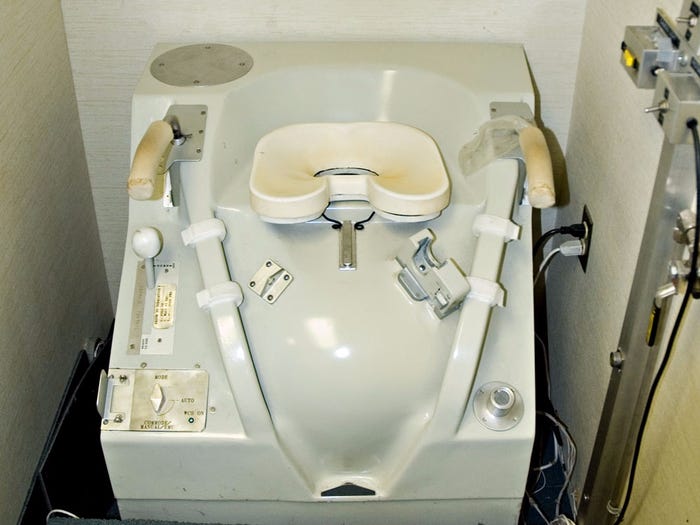
Astronaut Mike Massimino said he used thigh restraints when he needed to sit on the space toilet, since sitting on it felt like being on a motorcycle “I think of Peter Fonda in Easy Rider,” he said. “That’s the right position for me.”
In May 2008, the toilet on the ISS broke! The solid waste part was still ok, so the astronauts just peed in back – taking it back old school. 6 months later, the Russians replaced the toilet with a $19 Million toilet.
Today astronauts at the International Space Station go to the bathroom into a little plate-sized toilet hole, and a fan vacuum-sucks their poop away to be stored in a plastic bag and eventually sent away on a cargo ship that burns up as it flies toward earth. Their pee is suctioned away by a separate funnel equipped with a fan.
After the astronauts are done, their poop gets stored in a plastic bag, and eventually sent away on a cargo ship that burns up as it hurtles towards the Earth.
Retired astronaut Peggy Whitson, who logged a record-breaking 665 days in space for NASA, recently said that going to the bathroom in space was her least favourite part of working in zero gravity.

Regardless, the toilets on the ISS are pretty efficient at collecting urine and about 80-85 percent of what is collected gets recycled and becomes astronaut drinking water in about 8 days time. Cool and gross.
The Space Poop Challenge
In 2016, NASA ran a challenge – “The Space Poop Challenge” – but this time trying to find a way for astronauts to go to the bathroom while stuck in their suits for up to 6 days without having to wear a diaper.
The contest opened in October and asked participants to create a system inside a spacesuit to flush away urine, feces and menstrual fluid. The goal was to make the system function for 144 hours (6 days) — long enough to keep an astronaut alive for a rescue if his or her spacecraft were to be disabled and out of breathable air.
NASA astronauts had been simply using a diaper during spacewalks and launch and entry, but these systems can be used only for about a day. In general, it is difficult to design pooping systems for microgravity, where fluids and other things float. Maintaining good hygiene for these systems was among the primary challenges participants were tasked with solving.
The Space Poop Challenge winner was Thatcher Cardon, a family physician and flight surgeon.

According to his bio on the competition’s site. He took the prize with a solution called “MACES Perineal Access & Toileting System.” According to NPR: “He designed a small airlock at the crotch of the suit, with a variety of items—including inflatable bedpans and diapers—that could be passed through the small opening and then expanded. His design even allows an astronaut to change underwear while inside the spacesuit, through the same small opening.”
Cardon says the idea came from laparoscopy, in which complex surgery is performed through a small hole (usually with the help of a robot) instead of a large incision.
“I thought: ‘Why couldn’t we handle waste through a small opening? We can replace heart valves through a hole in a blood vessel, why not this?'” he says.

How it works is seriously AMAZING! so, the PAP (perineal access port) is basically an airlock that is located at the astronauts crotch. When the astronaut needs to go to the bathroom, they open the airlock and insert a tube called an “inducer” into the valve. “This prevents gas from escaping, and it also equalizes pressure so it’s easy to open. From there, astronauts can insert a variety of bathroom wizardry into their spacesuits without depressurizing their suits to the vacuum of space.
He created all sorts of crazy helpful things to stick in , for example, an inflatable bedpan. The bedpan is lined with soft terry cloth and contains a lubricant. It curls up, slides through the inducer, pushes through the port, and moves into position inside the spacesuit. Astronauts then squeeze an inflator bulb attached to the bedpan. “It inflates the device like a flower into a full-blown bedpan,” Cardon says. “This creates space in the suit. It’s nice to have space to defecate.” The lubricant makes sure any stool slips into the bedpan and doesn’t stick, while the terrycloth helps with cleanup. After an astronaut is done with the bedpan, it deflates, curls back up, and pulls back out the inducer tube. Other tools help clean up, like a water-spraying bidet.
But the “hygiene wand” with a wet-wipe roll on the end is truly revolutionary.
He also created mens and womens fresh undies that can go through the tube – the women’s is microfiber/absorbent for periods – urine cups to match both male and female anatomy. A battery-powered “universal suction device” helps pull waste into the bedpan or urine collectors and ultimately into waste-collection bags.
Another thing he mentions is how just having that port on the suit is a good idea in general, as one could perform emergency surgery through the hole.
Runners up : Team Space Poop Unification of Doctors (SPUDs) for the Air-powered Spacesuit Waste Disposal System
Hugo Shelley for the SWIMSuit – Zero Gravity Underwear for 6 Day Use
Lunarloo - Advanced Space Toilet Crowdsourced
Nasa’s Artemis-3 mission, which has a launch target of 2024, aims to land a man and a woman at the lunar south pole. It would be the first time astronauts have travelled to the lunar surface since 1972.
Michael Interbartolo, NASAAs we prepare for this extraordinary event, we can’t forget about the ordinary needs of our astronauts. It [toileting] certainly isn’t the prime focus of the mission. We’re not going back to the moon so we can say we pooped on the moon, but we don’t want an Apollo situation either.
NASA is currently offering $20k to anyone who can design a better space toilet than what they’re currently using – the total prize pot is $35k – chosen design gets $20k, runner up gets $10k and third place takes $5k.
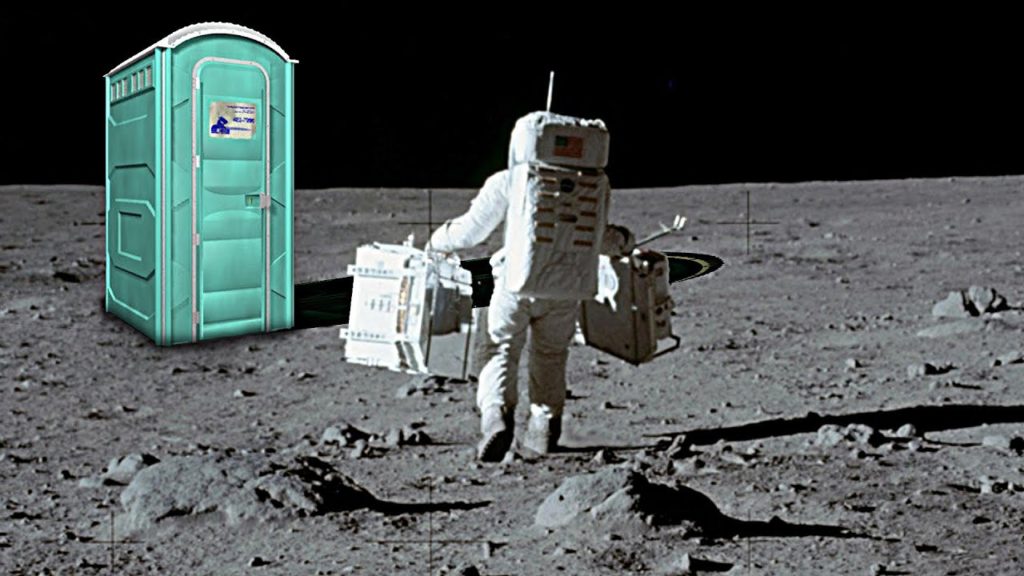
From the ad:
NASA is calling on the global community for their novel design concepts for compact toilets that can operate in both microgravity and lunar gravity. These designs may be adapted for use in the Artemis lunar landers that take us back to the Moon. Although space toilets already exist and are in use (at the International Space Station, for example), they are designed for microgravity only. NASA is looking for a next-generation device that is smaller, more efficient, and capable of working in both microgravity and lunar gravity. Getting back to the Moon by 2024 is an ambitious goal, and NASA is already working on approaches to miniaturize and streamline the existing toilets. But they are also inviting ideas from the global community, knowing that they will approach the problem with a mindset different from traditional aerospace engineering. This challenge hopes to attract radically new and different approaches to the problem of human waste capture and containment.
Toilet designs must be able to accommodate sick crew members dealing with vomiting and diarrhea. Although the preferred method for capturing vomit will be emesis bags (“throw up” bags), bonus points will be awarded to designs that can capture vomit without requiring the crew member to put his/her head in the toilet
Deadline: Aug 17th






